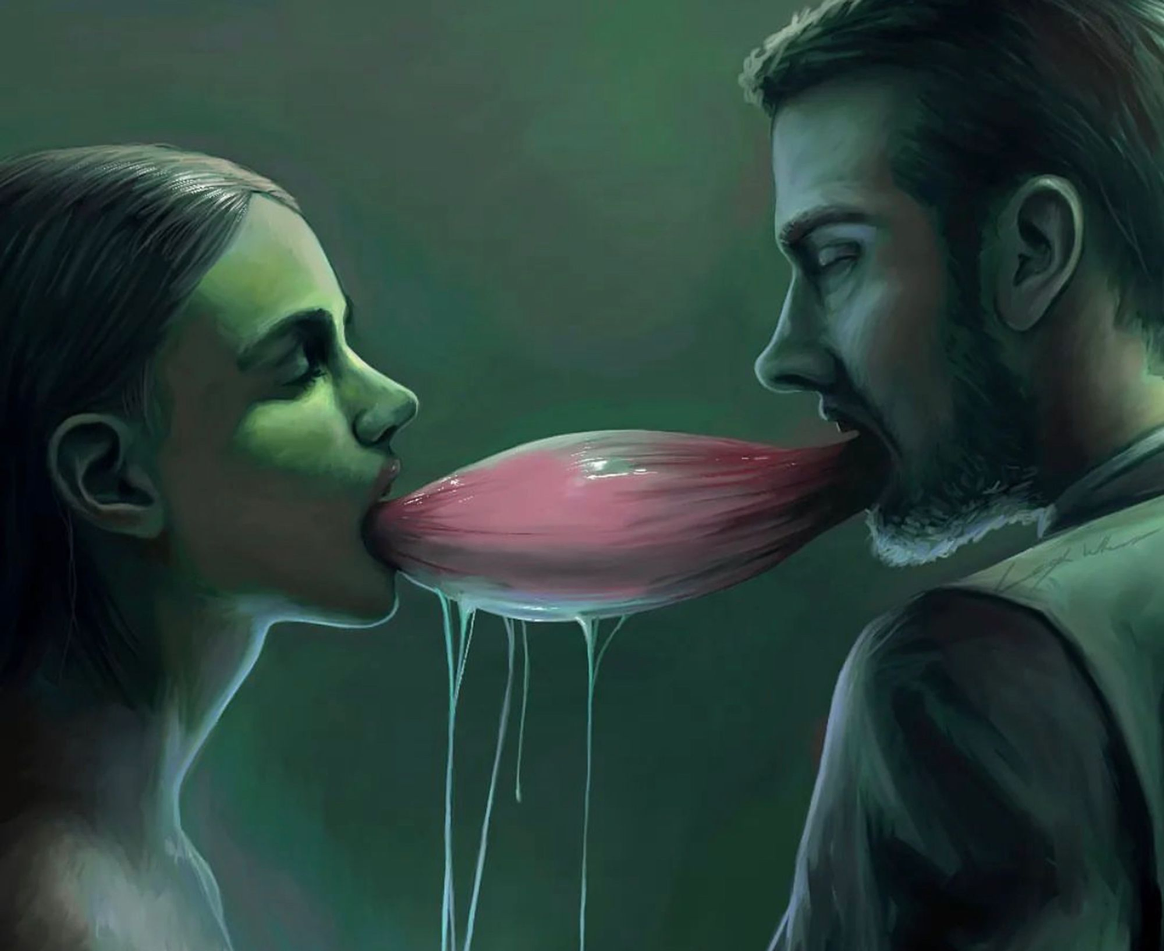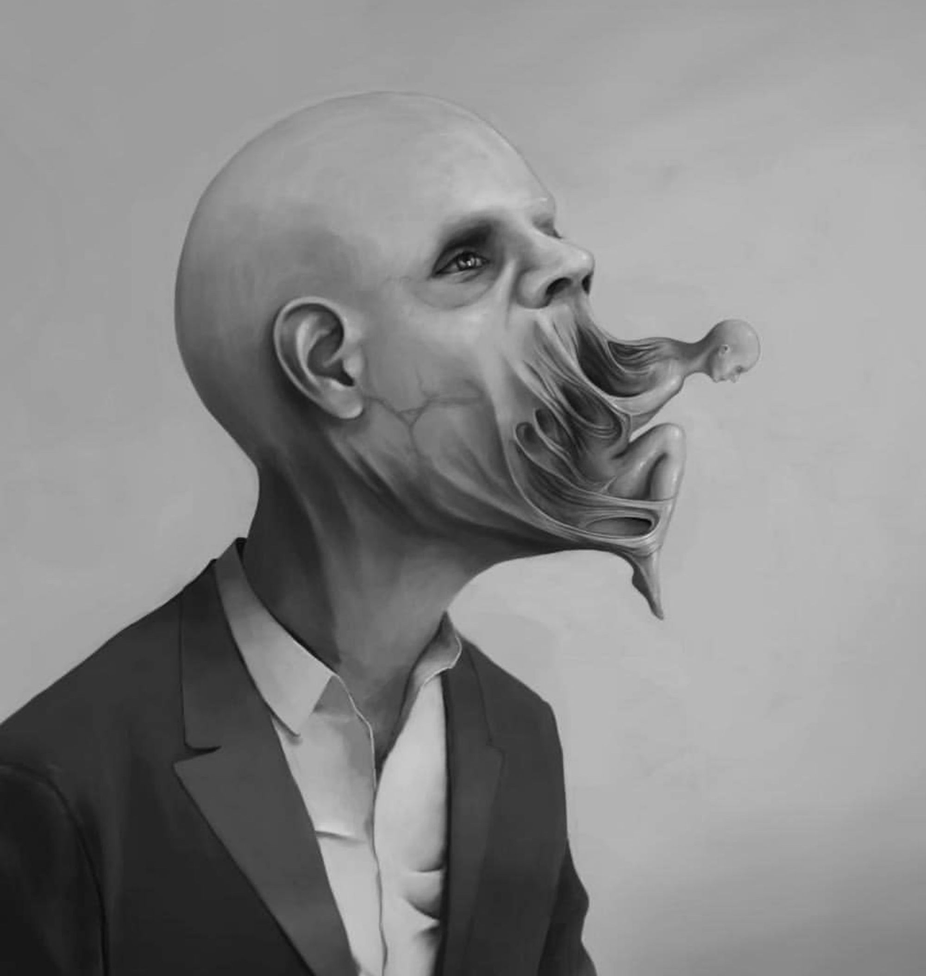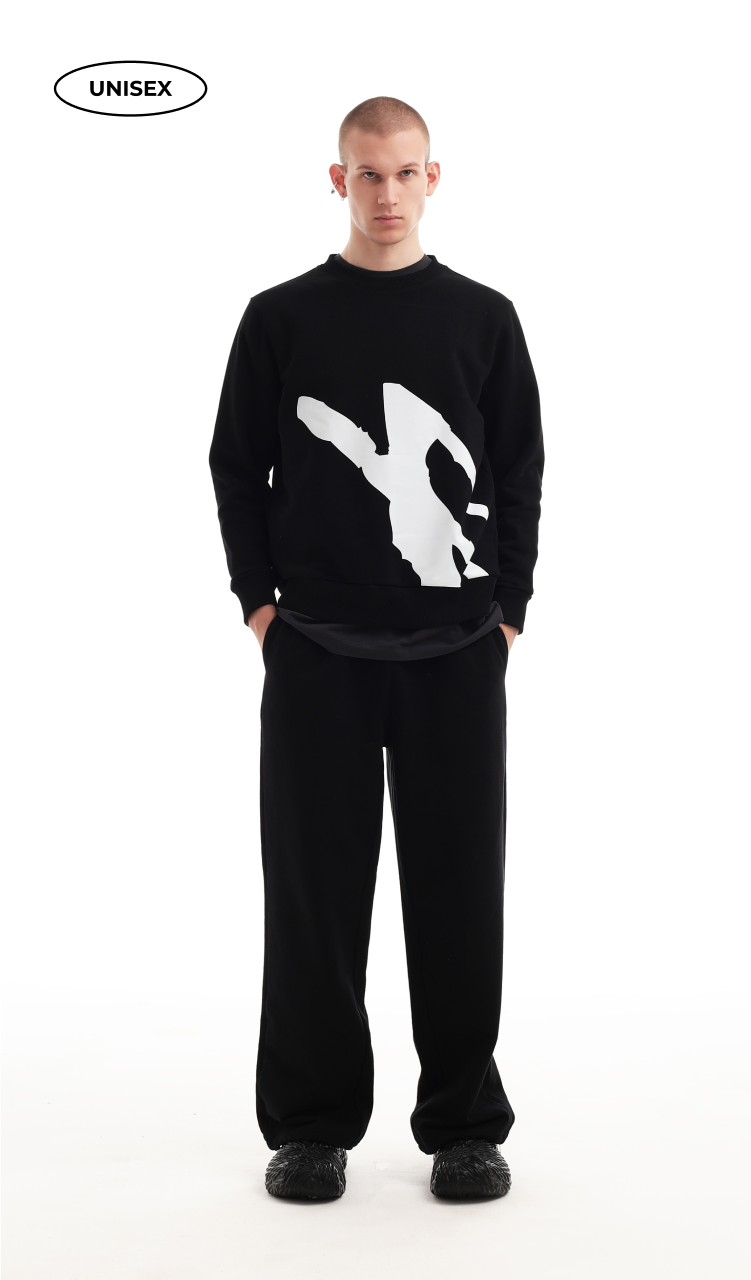Blog
Leigh Whurr and his dark surreal world

SHARE THE ARTICLE
Leigh Whurr is a digital and traditional surrealist artist.
The bleak world of his artwork is full of deep meanings that generate interesting thoughts and stimulate the imagination. He offers the viewer a kind of visual allegory, a new form of interpretation of our reality: frightening and at the same time fascinating in its strangeness.
We invite you to dive into this dark world and get to know the man behind these paintings.

Can you share your background? How did you get into art?
The need to create is deeply woven into my mind since early childhood. Having always been drawn to painting, drawing or engaged in some kind of creative activity, it allowed me to find my voice in the world. I came to be moved by the work of the surrealists in particular and went on to study Fine Art at University and achieved a Master’s Degree.


There is an opinion that all art is a kind of confession or sermon. What do you preach or confess to your audience?
There is an idea that the language we learn influences the way we think. Our world is one of symbols and representations that predispose us to a particular relationship with reality, if or when we come into contact with it. I think surreal imagery can be a way of confronting our perspective on reality as something that is influenced by the order and context in which it is presented to us, which makes up only a small portion of the reality itself.

The most unpleasant to the psyche is a distorted form of a person or an object that imitates a person. Do you agree? What attracts you to the deformity?
We fear the unknown, and the most familiar representation is that of ourselves. The deformity is a way to juxtapose the familiar and unfamiliar. An object that imitates a person is interesting and potentially disturbing, because it creates a sense of having lost the means to identify what is real. There is also a sense of the uncanny that emerges when an imitation is imperfect. This is especially the case for faces and this is often demonstrated in how difficult it can be to portray a realistic human face, in CGI for example, without it slipping into the ‘uncanny valley’. For me, I feel it is also an expression, on some level, of a persistent sense of alienation.



Do you follow a preset concept or go with the flow? How is a concept born? Tell me an example of one of your works.
There is often a deliberate concept or idea, despite the initial appearance of ambiguity. Describing it can be tricky, as I don’t tend to always think in words. It can come to me suddenly or unexpectedly, like receiving a signal from outer space. Other times, it can be slowly realised from a combination of influences. Sometimes, it can be inspired by what I haven’t seen, as opposed to what I have.
‘Balance’ as an example, came to me when I was considering the disjunction between who we are versus how we are interpreted and I imagined what the resulting juxtaposition might look like, if given a form. The unreality of the false image represented by the impossibility of the precarious gravity-defying balance, in contrast to the reality of the pain required to sustain it.

Which of your works is the most special to you and why?
My art is an ongoing journey and I feel my best work is yet to come. I have so many ideas that I’ve yet to realise. I am now producing oil paintings in addition to my digital paintings and I feel they may become more special to me, since traditional mediums take longer to finish and so I tend to develop a closer relationship with them.

Is there a portrait among your work that reflects you?
I usually focus more on the audience and their reaction to the work. It’s more like a language than a direct expression, a kind of relationship you develop with your audience. I do have one image titled ‘Identity’ which is loosely based on me, involving a mirror. It represents the turmoil of self-image. Am I in control of who I am? Or am I the product of what others see?


What was the weirdest thing that happened to you?
This is difficult, because my life is generally weird and I sometimes see weirdness in everyday things where you might not expect to find it. For example, I recently saw a pigeon collide with overhead glass and it hit the ground with an audible thud directly in front me, causing me to stop in my tracks. As it slowly bled out on the ground, it struck me as an example of how we cannot directly perceive in the moment what interferes with our world.
As a Fashion Art Director, “David Downtown” and “Tony Viramontes” inspire me with their powerful yet clear line work.

Why do you make art?
My inner world is often very intense and art is a way of externalising that plus giving myself a sense of a place in the world, rather than just existing as an immaterial floating mind. It is an act of communication. A way to make an impact.
One of the websites has information that you make films. Is it possible to see them somewhere? Are they similar to your work?
I’ve experimented with film and enjoyed it immensely. I decided it was a natural progression and am currently working on creating something much more ambitious.

What is your favourite film genre? Give me a list of films that are special to you?
I find myself drawn to some examples of cosmic horror and, of course, anything that could be described as surreal. My introduction to the world of surrealist cinema was David Lynch’s ‘Eraserhead’ and I was swallowed up by its dark atmosphere and general weirdness. I think there is a theme in his other films of a darker hidden reality that lurks just below the surface, that reflects my view of the modern world.



COMMENT
LEAVE A COMMENT
Actually, this article could
be in your email
Featured materials from FOXYLAB MAGAZINE
are available in our newsletters.
Subscribe and get a dose of inspiration!
SHARE THE ARTICLE

more articles
International fashion icon and symbol of Parisian style, Ines de la Fressange is one of the most famous women in France.
A whole world on the tip of a pencil. The story of an artist who proved that true art has no limits and that it is never too late to start all over again.
Vitalie Burcovschi’s digital art captivates the soul and transports the viewer to a realm of boundless imagination and emotion. In his art, he creates…
Anastasia Pilepchuk is a Berlin-based artist with Buryat roots. She creates masks and face jewellery inspired by the nature and the culture of her beautiful region.

want to share your story
with the world?
We're open to collaborating with creative and talented individuals like you. Leave us your email below, and let's connect for interviews, articles, and more.
don’t miss!
New drop
foxylab ny x Edward Acosta
New drop FXLB x Edward Acosta
A thin edge of seduction and the consumerism fetish is thoroughly blurred in Acosta’s art in the use of both light, and dark tones. Bold lines serve as a fashionable juxtaposition of a peaceful dream-like state and a vivid color, representing action and presence in the moment.
International fashion icon and symbol of Parisian style, Ines de la Fressange is one of the most famous women in France.
A whole world on the tip of a pencil. The story of an artist who proved that true art has no limits and that it is never too late to start all over again.
Vitalie Burcovschi’s digital art captivates the soul and transports the viewer to a realm of boundless imagination and emotion. In his art, he creates…
Anastasia Pilepchuk is a Berlin-based artist with Buryat roots. She creates masks and face jewellery inspired by the nature and the culture of her beautiful region.















